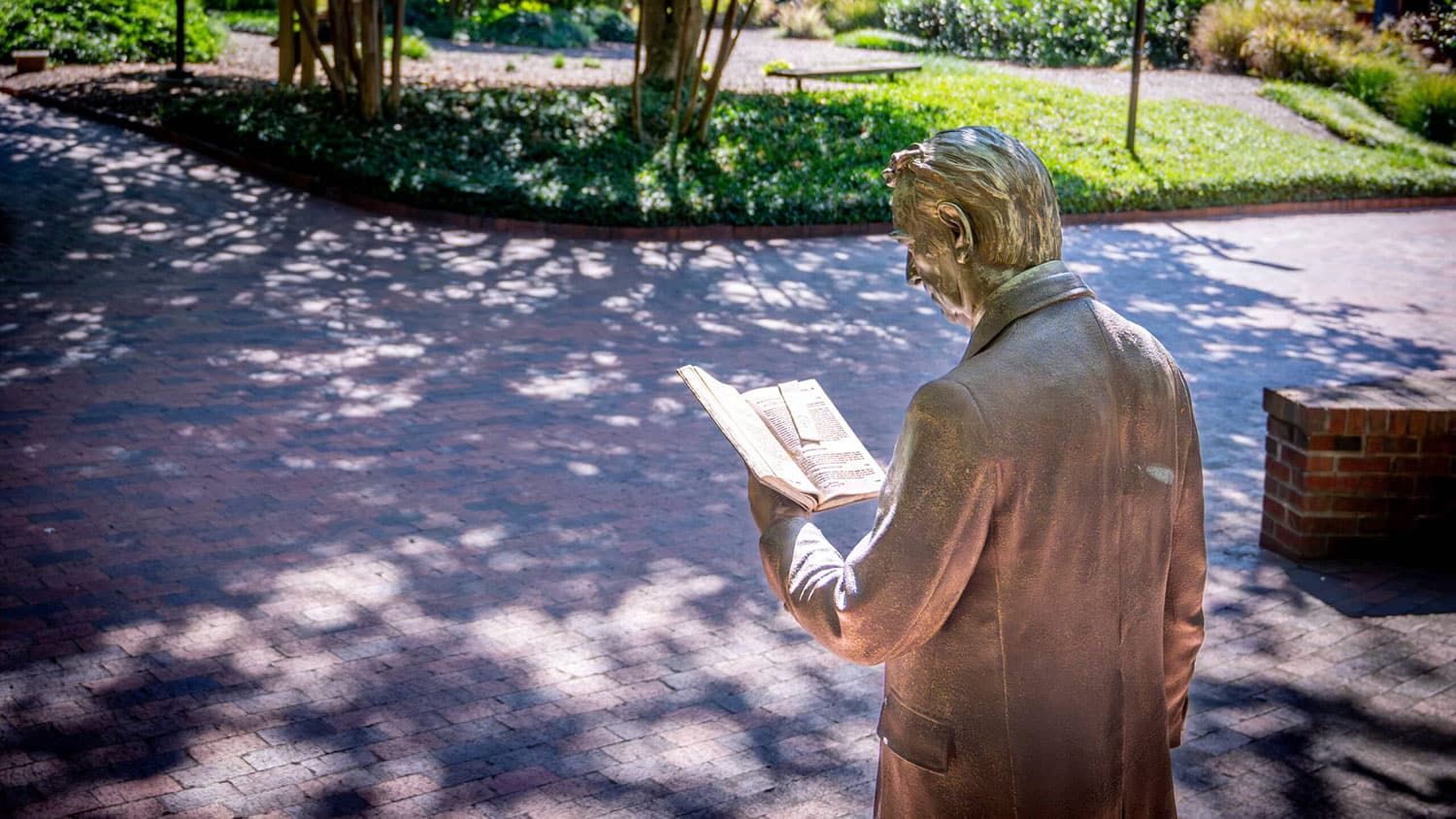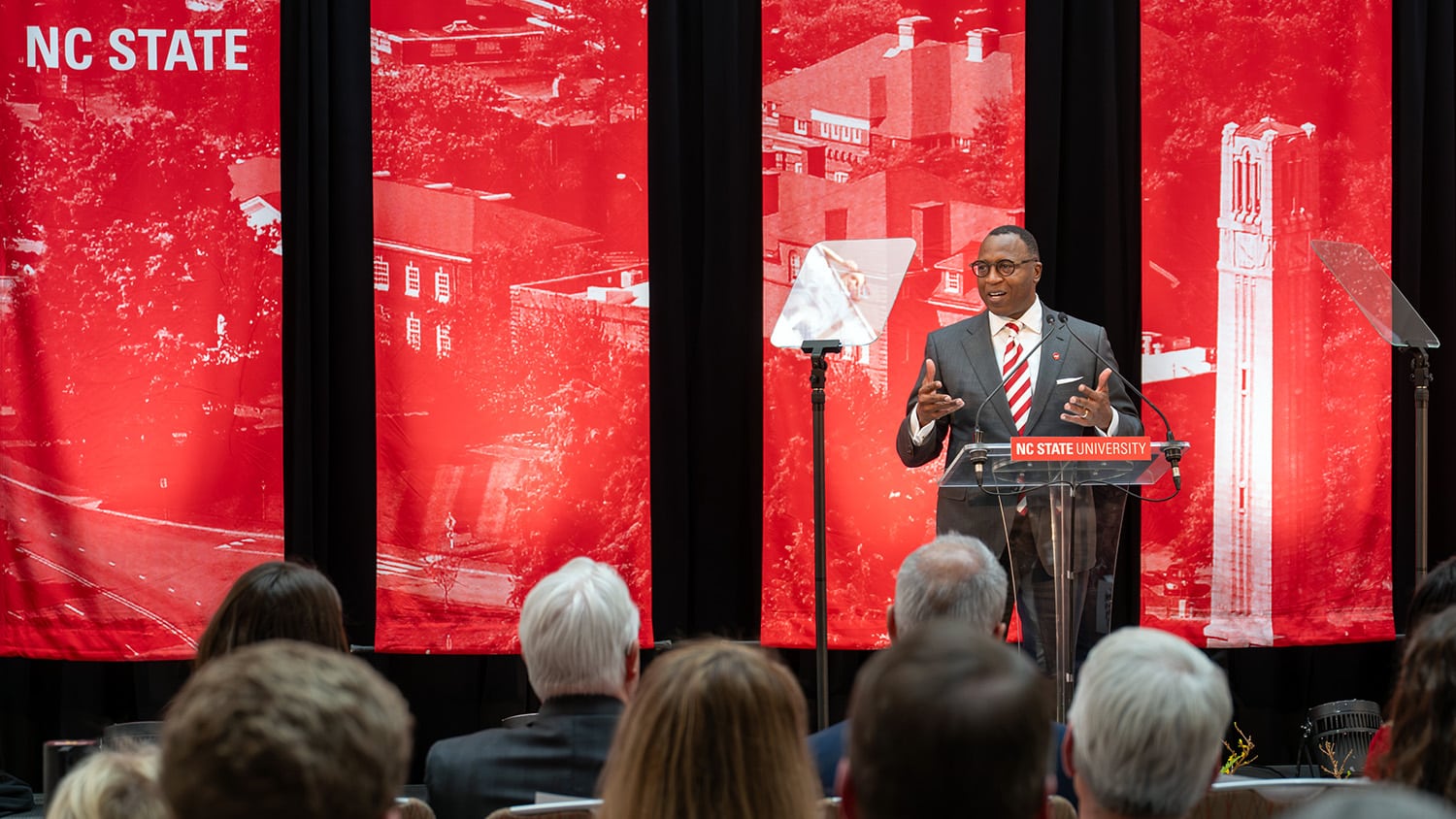Prolific Professor
In 1943, Franklin D. Roosevelt was president, World War II was in full swing and a young man named Hans Conrad was embarking on a career as a materials science researcher.
Sixty-eight years later, Conrad comes to the lab every day, publishes top-notch papers and tries to figure out the physical and mechanical properties of the materials that make up the world we live in.
Boundless Curiosity
In the past seven decades, Conrad, a professor emeritus of materials science and engineering, has worked on aluminum alloys for aircraft, cold-welding materials in the vacuum of space, superconductivity and lasers.
“I’m always impressed with his enthusiasm for science and how sharp he is,” says colleague Dr. Carl Koch. “He’s made major contributions to many areas of materials science and in the past 20 years has been the leader in studying the effects of electrical or magnetic fields on materials behavior.”
Now in his late 80s, Conrad has published several papers in the past year on how electric fields could revolutionize the ceramics industry. He found that by applying a small electric field, it’s possible to make stronger ceramics in less time, with less energy.
Not bad considering he retired from NC State 18 years ago.
Why does Conrad continue to work?
“The major driving force is my strong interest in science,” he says. “Also, continuing to do research provides a daily goal. And, I enjoy working with the students.”
Unanswered Questions
Conrad has worked with ceramics off and on since the 1960s, including research on ceramic heat shields for the space program, but now he’s focused on learning more about how electric fields could change the ceramics field.
“That’s what research is about: Every time you answer one question, you open up 10 other questions,” he said in a 2010 Raleigh News & Observer interview. “It could take the rest of my life.”
Conrad’s work has earned notice from his peers worldwide. ASM International, a prominent materials science and research society, announced last month that Conrad will be awarded the ASM Gold Medal for 2012, given to a single researcher each year. It recognizes “outstanding knowledge and great versatility in the application of science to the fields of materials science and engineering, as well as exceptional ability in the diagnosis and solution of diversified materials problems.”
Conrad says mentors and fellow researchers have contributed to his lifelong love of science, including colleague Dr. Jay Narayan, who’s encouraged him to remain active in research.
On the subject of retirement, Conrad likes to paraphrase Gen. Douglas MacArthur: “Old professors never retire; they just research away.”
Photo above by John Rottet, courtesy of the News & Observer.
One Person Can Change The World: Or At Least What The World Is Made Of
In 1943, Franklin D. Roosevelt was president, World War II was in full swing, and a young man named Hans Conrad was embarking on a career as a materials science researcher. Sixty-eight years later, he is still showing up to the lab every day, publishing top-notch papers and trying to figure out the physical and mechanical properties of the materials that make up the world we live in. I want to be him when I grow up.
Over the course of the past seven decades, Conrad – Professor Emeritus of Materials Science and Engineering (MSE) at NC State – has worked on aluminum alloys for aircraft, lasers, cold-welding materials in the vacuum of space, semiconductivity, superconductivity and ceramics.
“I am always impressed with his enthusiasm for science and how sharp he is,” says Carl Koch, Kobe Steel Distinguished Professor in MSE. “He is always at our seminars and asks incisive questions. He has made major contributions to many areas of materials science and in the last 20 years has been the leader in studying the effect of electrical or magnetic fields on materials behavior.”
Now in his late 80s, Conrad has published several papers in the past year on how electric fields could revolutionize the ceramics industry. For example, Conrad found that applying a small electric field results in faster formation of ceramic products during manufacture at lower temperatures, and enhances the strength of the ceramic itself. In short, you can make ceramics in less time, with less energy, for less money – and the quality of the ceramics actually improves.
In another 2010 paper, Conrad showed that the use of electric fields could make it vastly easier to deform ceramic materials. Not bad for a guy who, technically, retired from NC State 18 years ago.
Why does Conrad continue to work? “The major driving force is my strong interest in science,” Conrad says. “Also, continuing to do research provides a daily goal to my life. Moreover, I enjoy working with the students.”
Conrad has worked with ceramics off and on since the 1960s (e.g., he worked on ceramic heat shields for the space program), but now he’s focused on learning more about how electric fields could change the face of the ceramics field (pun intended). As Conrad told the Raleigh News & Observer in 2010, “That’s what research is about: Every time you answer one question, you open up 10 other questions. It could take the rest of my life.”
In addition to the satisfaction he derives from his work, Conrad is also being recognized by the larger community of materials researchers. ASM International, a prominent materials science and research society, announced June 29 that Conrad will be awarded the ASM Gold Medal for 2012. The medal has been given to a single researcher every year since 1943 (at most – some years the award has not been given at all), in recognition of “outstanding knowledge and great versatility in the application of science to the fields of materials science and engineering, as well as exceptional ability in the diagnosis and solution of diversified materials problems.”
When asked what advice he has for other faculty on sustaining a long academic career, Conrad says, “You must really enjoy what you are doing or find what you really enjoy.”
Beyond his love of science, Conrad has drawn inspiration from mentors and colleagues over the years. “I had a number of teachers and professors who stimulated and fostered my interest in science. Dr. Jay Narayan [John C. Fan Distinguished Chair Professor of MSE] has provided encouragement to me to remain active in research. Finally, I would like to paraphrase General MacArthur when he gave his retirement address: ‘Old professors never retire; they just research away.’”
With over 400 papers to his credit, it can be safely said that Conrad has made his mark. Even better, it can also be said that he’s not done yet. I’m looking forward to seeing his next one.
- Categories:


